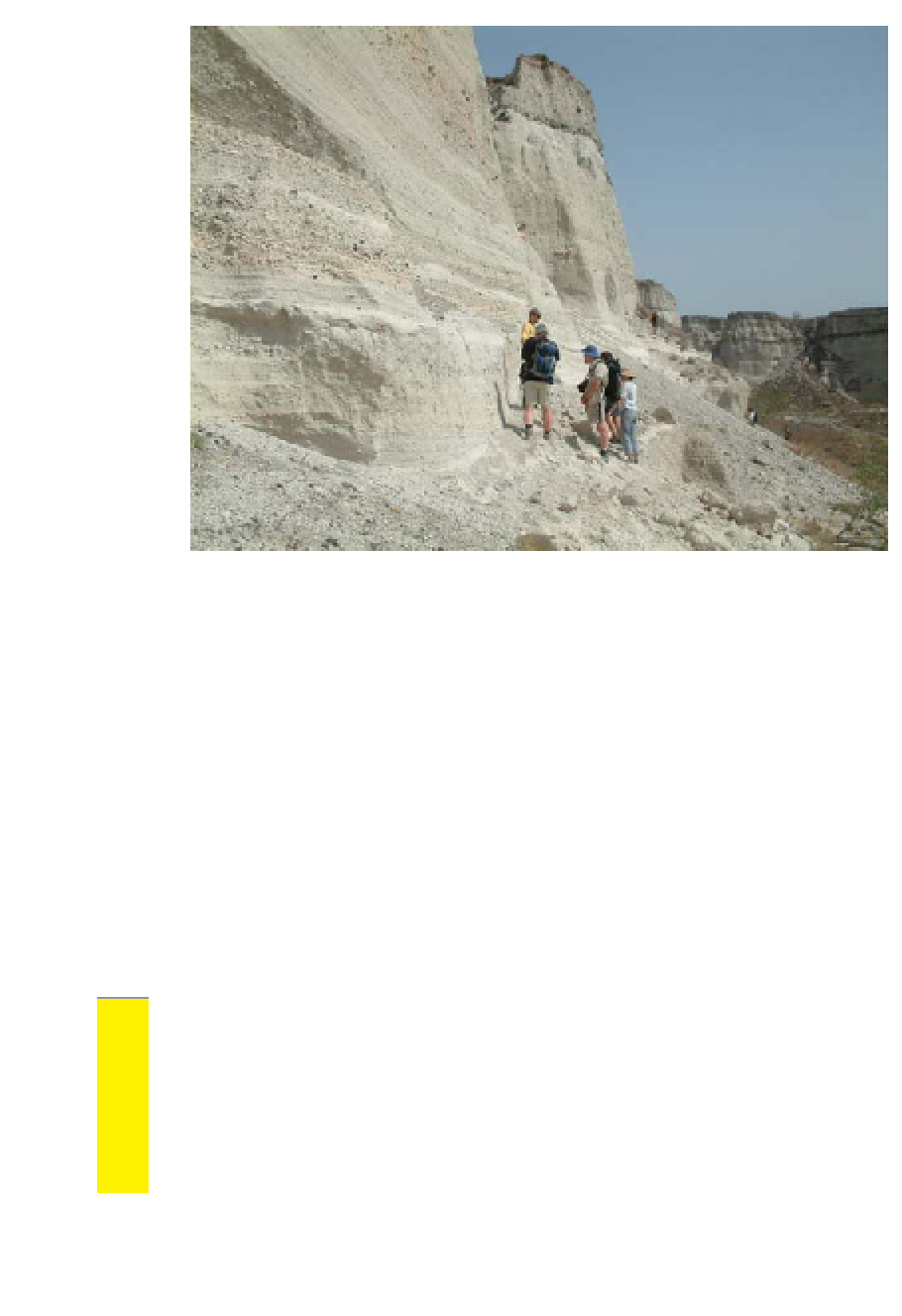Geology Reference
In-Depth Information
Figure 5.17
Thick non-welded ignimbrite deposit from the Minoan eruption,
Santorini, Greece.
result in block and ash flows. In some instances they can be hot (i.e. with dome
collapse and examples where hot injecting magmas causes slope failure), but
also they can form from cold fragmented material. They tend to not travel as far
as pyroclastic flows, and in the case of sector collapse result in a characteristic
hummocky topography.
5.3 Scoria Cones
Scoria cones are very common small explosive eruption features that occur
in most volcanic provinces. These are conical in morphology commonly with a
crater at the top, and due to their unconsolidated nature the internal structures can
be exposed by erosion and/or collapse. They usually represent single eruptions
of relatively small volumes of magma and can commonly occur as fields of
cones, or on the side of larger volcanoes where they are termed parasitic cones.
Figure 5.20 highlights the stages of a scoria cone development, which commonly
involve an initial build up phase with an original volcanic rim, which becomes
reworked as the slopes get oversteepended and slide/collapse to form scoria
tallus (for example, Figure 5.20c,d). Around the apron of the cone you will
often find bombs and other balistics. Examples of scoria cones are given in
Figure 5.20e.
















